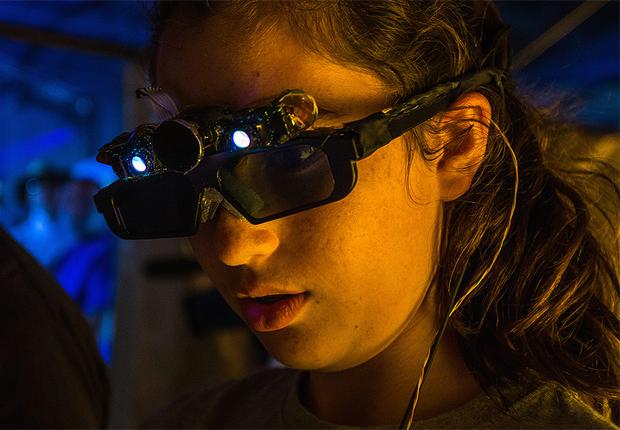The new navigation device consists of glasses with stereo sound sensors, GPS technology and a tablet, which guides the blind person to a specific point and avoids hitting static or moving obstacles - but it also recognizes currency of various denominations and the color of clothing. No more crazy plaids and stripes, no chance of getting cheated in a store.
While doing a previous robotics project, Eduardo José Bayro Corrochano, project leader, said he started pondering about how to use stereoscopic vision algorithms in a guiding device for people with visual disability. The final idea came from a doctoral thesis at the CINVESTAV on the use of stereoscopic vision lenses designed for people with blindness. To do this, the researchers went to the School for Blind Girls in Guadalajara, which addresses this type of disabilities, in order to meet the needs of the visually impaired.

Credit: Center for Research and Advanced Studies
Once they got funding, they were able to achieve development of the lens, set the hardware, adapt processors and try different types of sensors used in the device.
"We currently have a light weight, ergonomically acceptable prototype since it almost looks like a normal pair of glasses and can work in real time with batteries that last approximately four hours in continuous use. We hope to have a commercial prototype by next August at the latest, and being able to market it in early 2015," said Bayro Corrochano said.
Researcher at the CINVESTAV estimate that the commercial product would cost $10-15,000 and consist of the glasses with sensors and a tablet from which a voice would tell directions and/or warnings.
There are already similar devices but the use of ultrasound techniques to detect translucent obstacles, like glass, and the use of artificial intelligence (machine learning) in order to recognize places, signs and objects makes this unique. These glasses are also useful for those with poor eyesight, as they help to improve perception.
The project has generated two patents at the Mexican Institute of Industrial Property, and the developers are looking for investors interested in participating in large-scale production.





Comments